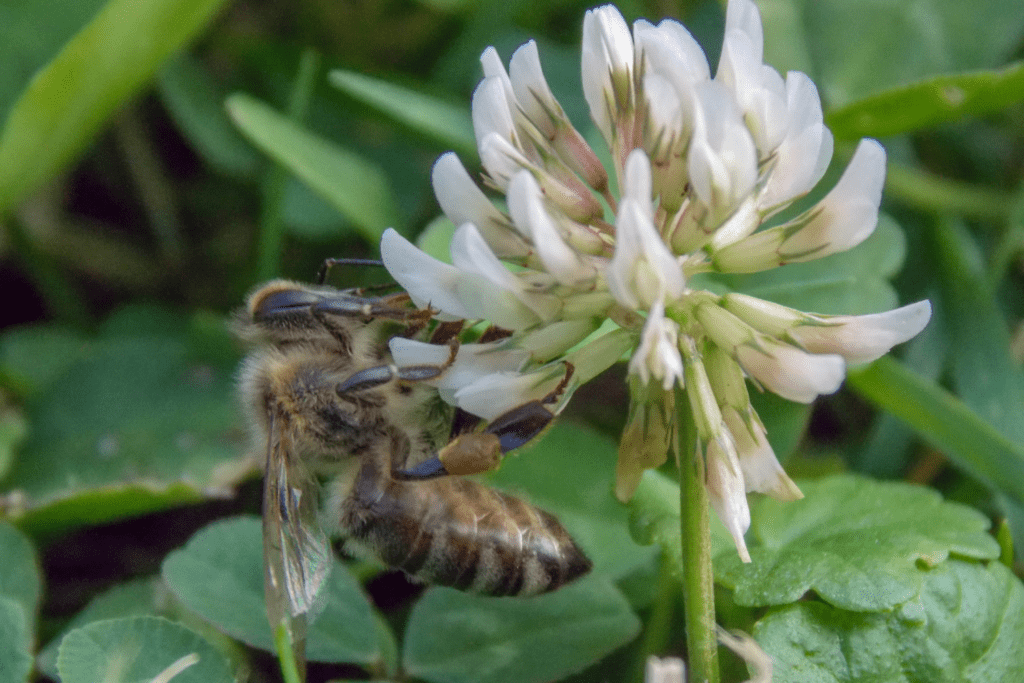This post contains affiliate links, meaning, at no additional cost to you, if you click through and make a purchase, I may receive a commission. I only share items that I truly love and use myself. For more information please see my disclosures here.
Be sure to listen to the
She’s Got It Together Podcast!
Summer is in full swing, and with it comes the joy of outdoor adventures with our little ones. But along with the fun and sunshine, there’s always a chance we’ll encounter one of nature’s less pleasant surprises: bee stings. If you’re anything like me, the sight of a bee can send a little shiver down your spine, especially when your kids are around. But don’t worry! I’ve got you covered with everything you need to know about identifying and treating bee stings. Let’s dive into this buzzing topic together.
What to Look For: Spotting a Bee Sting
First things first, how do you know if your child has been stung by a bee? It’s not always obvious, especially if they’re too young to tell you. Here are some telltale signs:
- Immediate Pain or Discomfort: A bee sting usually causes sharp pain or discomfort at the site of the sting. Your child might cry out, scream, or start rubbing the area.
- Redness and Swelling: Look for a red, swollen spot where the sting occurred. The swelling might spread a bit beyond the initial sting site.
- A Visible Stinger: Sometimes, you might see a tiny black stinger left in the skin. This is more common with honeybees, as they leave their stinger behind.
- Itching and Warmth: The sting site might feel warm to the touch and itch. This is a normal reaction and part of the body’s healing process.
- Localized Hives: In some cases, a bee sting can cause a localized allergic reaction, resulting in hives or a rash around the sting area.
When to Be Concerned: Allergic Reactions
While most bee stings are harmless and only cause minor discomfort, it’s crucial to know the signs of a more severe allergic reaction. Anaphylaxis, a severe allergic reaction, can be life-threatening and requires immediate medical attention. Here’s what to look out for:
- Difficulty Breathing: If your child starts wheezing, coughing, or has trouble breathing, seek medical help immediately.
- Swelling Beyond the Sting Site: Swelling that extends beyond the sting site, especially around the face, lips, or throat, is a warning sign.
- Rapid Pulse: A fast or irregular heartbeat can indicate anaphylaxis.
- Dizziness or Fainting: Feeling lightheaded, dizzy, or faint can be a sign of a severe allergic reaction.
- Nausea, Vomiting, or Diarrhea: Gastrointestinal symptoms can also occur during anaphylaxis.
If your child shows any of these symptoms, call 911 or head to the nearest emergency room immediately. Time is of the essence in these situations.

First Aid for Bee Stings: A Step-by-Step Guide
Now that we know what to look for, let’s talk about how to treat a bee sting. Here’s a simple step-by-step guide to help you through the process:
- Stay Calm: Your child will likely be upset, so staying calm is crucial. Reassure them that everything will be okay.
- Remove the Stinger: If you see a stinger, gently remove it as quickly as possible. Use a flat object like a credit card to scrape it out, or your fingernail if that’s easier. Avoid using tweezers, as squeezing the stinger can release more venom.
- Clean the Area: Wash the sting site with soap and water to prevent infection.
- Apply a Cold Compress: Use a cold pack or a cloth soaked in cold water to reduce swelling and numb the area. Apply for 10-15 minutes at a time.
- Administer Pain Relief: Over-the-counter pain relievers like ibuprofen or acetaminophen can help alleviate pain and reduce inflammation.
- Use an Antihistamine: If your child is experiencing itching or swelling, an oral antihistamine like Benadryl can help. Always follow the dosage instructions on the package or consult your pediatrician.
- Apply Topical Treatments: Calamine lotion, hydrocortisone cream, or a baking soda paste can soothe the itch and reduce redness.
- Keep an Eye on It: Monitor the sting site for any signs of infection, such as increased redness, warmth, or pus.
Natural Remedies for Bee Stings
If you’re a fan of natural remedies, here are a few you might find in your kitchen or garden that can provide relief:
- Honey: Surprisingly, honey can help soothe a bee sting. Apply a small amount to the sting site and cover with a loose bandage.
- Baking Soda: Mix baking soda with water to form a paste and apply it to the sting site. This can help neutralize the venom and reduce itching.
- Aloe Vera: Fresh aloe vera gel has anti-inflammatory properties that can soothe the skin and promote healing.
- Apple Cider Vinegar: Soak a cotton ball in apple cider vinegar and apply it to the sting site. It can help reduce pain and swelling.
- Tea Tree Oil: Dilute tea tree oil with a carrier oil (like coconut or olive oil) and apply it to the sting site. It has antiseptic properties that can prevent infection.
Preventing Bee Stings: Tips for Parents
While it’s impossible to avoid bees entirely, there are steps you can take to minimize the risk of bee stings:
- Dress Appropriately: When playing outside, dress your child in light-colored clothing and avoid floral prints, which can attract bees.
- Avoid Fragrances: Skip scented lotions, soaps, and shampoos when heading outdoors, as they can attract bees.
- Be Cautious with Food and Drinks: Keep food and sugary drinks covered when picnicking or dining outside. Bees are attracted to sweet smells.
- Stay Calm: If a bee approaches, teach your child to stay calm and avoid swatting at it. Slowly and calmly walk away from the bee.
- Check for Nests: Regularly inspect your yard for bee nests and take precautions if you find any. Contact a professional if necessary.
- Educate Your Child: Teach your child to recognize bees and wasps and to avoid disturbing them. Encourage them to alert you if they see a bee nearby.
Bee stings are an unfortunate part of summer, but with a little knowledge and preparation, you can handle them like a pro. Remember to stay calm, treat the sting promptly, and watch for any signs of a severe allergic reaction. By taking a few preventive measures, you can reduce the chances of your child getting stung and keep the summer fun rolling.
So, next time you’re out enjoying a sunny day with your little ones, you’ll be prepared to tackle any bee encounters with confidence. Here’s to a sting-free and fantastic summer!


